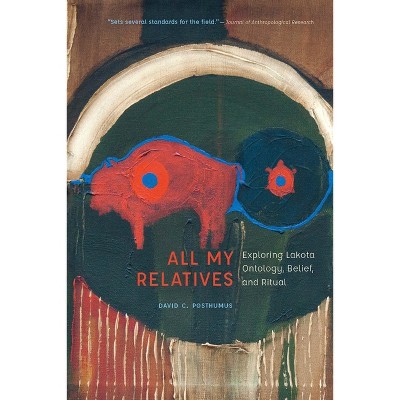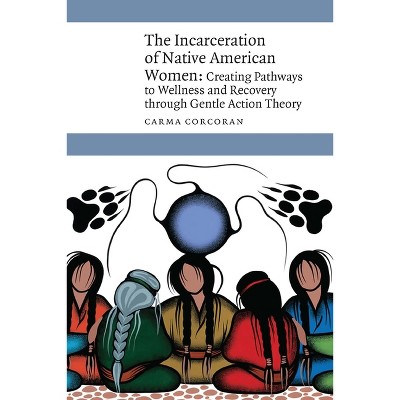Sponsored

Invisible Reality - (New Visions in Native American and Indigenous Studies) by Rosalyn R Lapier
In Stock
Sponsored
About this item
Highlights
- [LaPier's] book refreshingly is tied to her extended family, especially its women, instead of the generalized 'Blackfoot' of most outside ethnographers.
- About the Author: Rosalyn R. LaPier is an associate professor in the environmental studies program at the University of Montana and a research associate at the National Museum of Natural History.
- 246 Pages
- Social Science, Ethnic Studies
- Series Name: New Visions in Native American and Indigenous Studies
Description
Book Synopsis
[LaPier's] book refreshingly is tied to her extended family, especially its women, instead of the generalized 'Blackfoot' of most outside ethnographers. Readable in style, [Invisible Reality] conveys the self-respect and confidence that paternalist governance and poverty could not defeat.--A. B. Kehoe, Choice
Rosalyn R. LaPier demonstrates that Blackfeet history is incomplete without an understanding of the Blackfeet people's relationship and mode of interaction with the "invisible reality" of the supernatural world. Religious beliefs provided the Blackfeet with continuity through privations and changing times. The stories they passed to new generations and outsiders reveal the fundamental philosophy of Blackfeet existence, namely the belief that they could alter, change, or control nature to suit their needs and that they were able to do so with the assistance of supernatural allies. The Blackfeet did not believe they had to adapt to nature. They made nature adapt. Their relationship with the supernatural provided the Blackfeet with stability and made predictable the seeming unpredictability of the natural world in which they lived.
In Invisible Reality LaPier presents an unconventional, creative, and innovative history that blends extensive archival research, vignettes of family stories, and traditional knowledge learned from elders along with personal reflections on her own journey learning Blackfeet stories. The result is a nuanced look at the history of the Blackfeet and their relationship with the natural world.Review Quotes
"[LaPier's] book refreshingly is tied to her extended family, especially its women, instead of the generalized 'Blackfoot' of most outside ethnographers. Readable in style, [Invisible Reality] conveys the self-respect and confidence that paternalist governance and poverty could not defeat."--A. B. Kehoe, Choice
"An important book that tackles some interesting philosophical issues in epistemology and ontology from a Native American perspective, [Invisible Reality] does so with a critical eye regarding change under colonization and modernity."--Patricia Albers, professor of American Indian studies and anthropology at the University of Minnesota and coauthor of The Hidden Half: Studies of Plains Indian Women-- (3/1/2017 12:00:00 AM)
"Rosalyn LaPier guides us through the meanings the Blackfeet community has attached to the plants and natural phenomena that surround them and at the same time makes clear the boundless complexity and stunning beauty of this indigenous cultural tradition."--Frederick E. Hoxie, Swanlund Professor at the University of Illinois at Urbana-Champaign and editor of The Oxford Handbook of American Indian History -- (3/1/2017 12:00:00 AM)
"This is an important, accomplished, creative, [and] imaginative history that zings with original insights."--Sarah Carter, professor and the Henry Marshall Tory Chair of the Department of History and Classics at the University of Alberta and editor of Montana Women Homesteaders: A Field of One's Own-- (3/1/2017 12:00:00 AM)
About the Author
Rosalyn R. LaPier is an associate professor in the environmental studies program at the University of Montana and a research associate at the National Museum of Natural History. She is the coauthor, with David R. M. Beck, of City Indian: Native American Activism in Chicago, 1893-1934 (Nebraska, 2015), winner of the 2016 Robert G. Athearn Award from the Western History Association.Shipping details
Return details
Trending Non-Fiction











